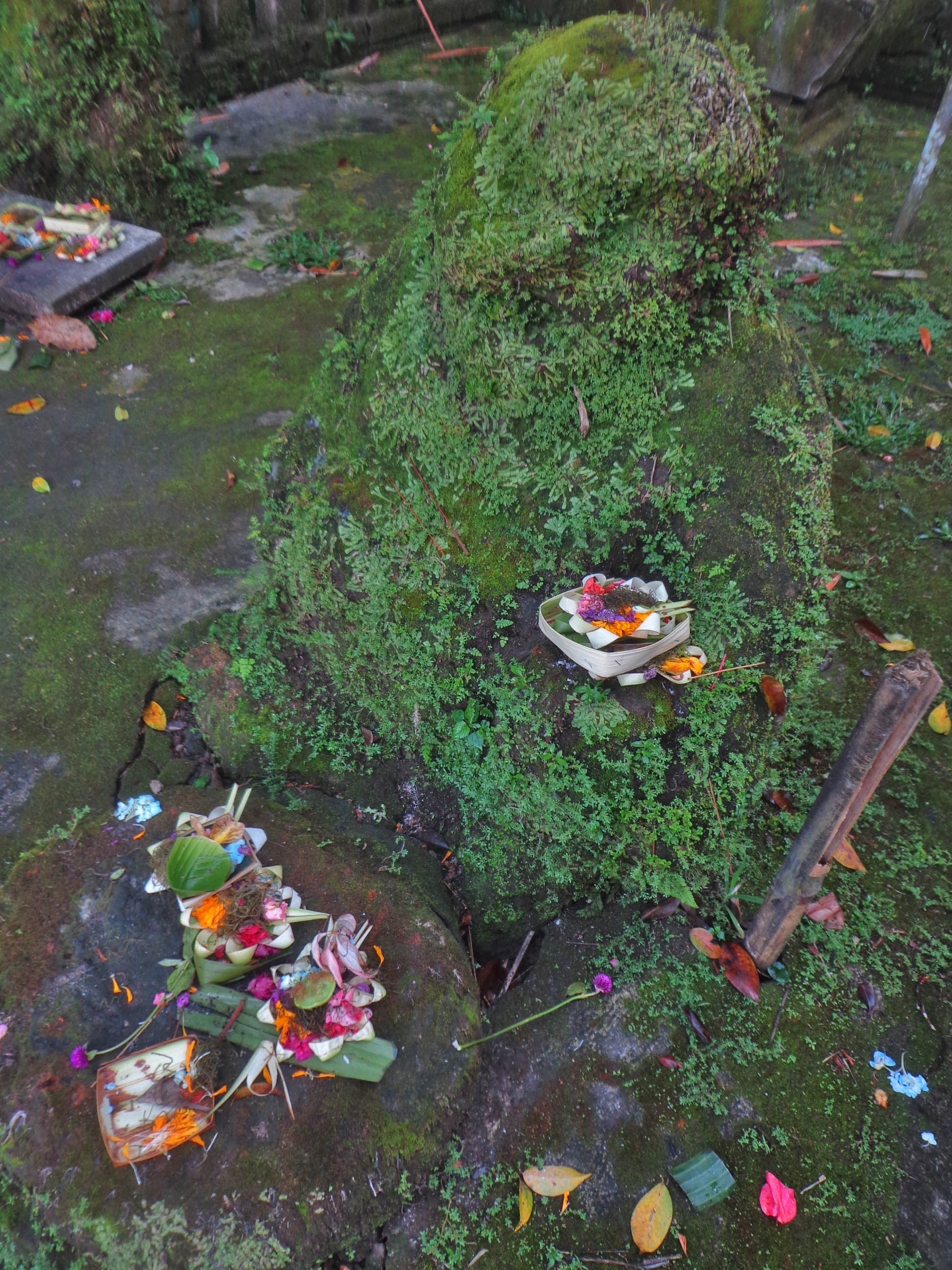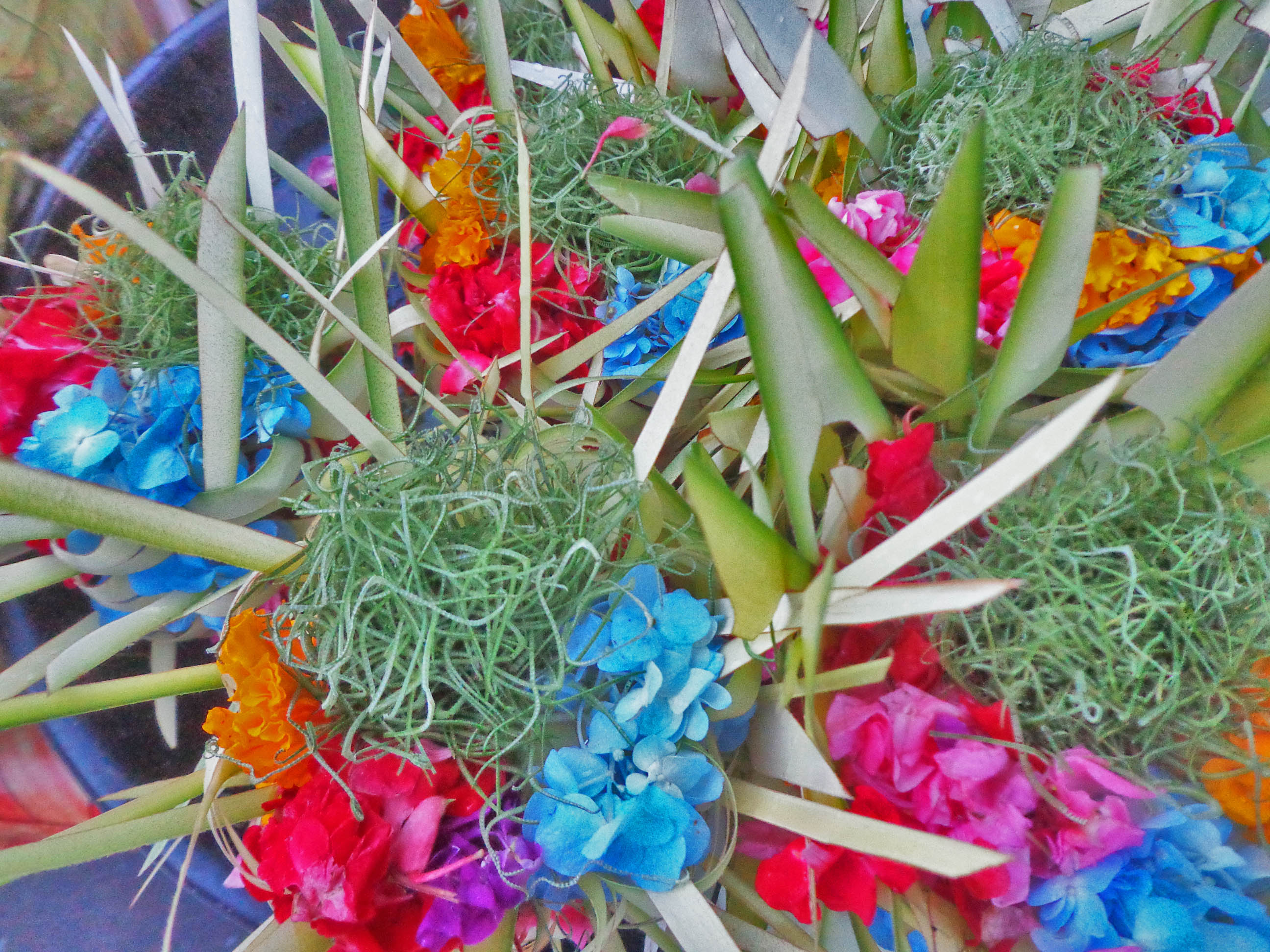Advertiser Disclosure: noworkalltravel.com earns an affiliate commission for anyone making a purchase through some links available on this website. For more information, please visit the Advertising and Privacy Policy page.
If you’ve ever researched going to, or have been to Bali, then you’ve mostly likely noticed canang sari.

Before diving into what canang sari represents, it’s important to point out that Bali is Indonesia’s last prominent Hindu bastion, a relic of centuries of Hindu and Buddhist rule throughout the Indonesian archipelago, roughly peaking between the 5th and 13th centuries AD. However, there are some key differences between Balinese Hinduism and Hinduism followed by much of India– namely, Balinese Hinduism incorporates aspects of Buddhism, beliefs in animism, Malay ancestral worship, a lack of a caste system, and no child marriages.
Furthermore, in keeping with the Indonesian government’s creation of Pancasila (five principles) – in which monotheism is a requirement to be a sanctioned religion – Balinese Hindus primarily worship Sang Hyang Widhi Wasa, a deity unknown to most followers of Hinduism in India. Although there are many minor gods representing water, fire, earth, fertility, rice, and so on, it was necessary for Balinese Hindu acolytes to accept that these lesser gods all form one primary deity, Sang Hyang Widhi Wasa.

What exactly is canang sari? Loosely translated as essence (sari) in a palm frond tray (canang, pronounced cha-nang), canang sari are offerings to local gods left daily by Balinese people, typically in the early morning or around dusk. Depending on the ritual and importance of that day, they may either small or grandiose, and will be filled with flowers, herbs, food, money, and incense.
Canang sari are strategically placed by entrances to family compounds, altars, temples, in addition to restaurants, hotels, and other structures. Chiefly, canang sari show to the deities the time spent by each family in making them, to keep the good and bad balanced, and as a thanks for keeping the family harmonious.

In addition to the incense, the basic components of the canang sari are called the peporosan; they symbolize the Trimurti, or the three dominant Hindu gods:
- Shiva, the destroyer, represented by white lime
- Vishnu, the preserver, represented by a red betel nut
- Brahma, the creator, represented by a green gambier leaf
On top of the canang sari are flowers dedicated to sincerity and love, placed in specific cardinal directions:
- White petals for Ishvara, supreme lord/personal god, pointing East
- Red petals for Brahma, pointing South
- Yellow petals for Shiva, pointing West
- Blue/Green petals for Vishnu, pointing North
Once that incense fizzles out, however, you might notice some local fauna nibbling away at canang sari. According to tradition, as long as there’s no more incense to be burned, it’s totally ok to do so…not that the animals know either way~
Piqued your interest yet? I’ve still got those rice terraces on my mind.

Leave a Reply